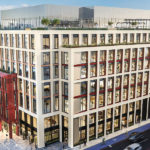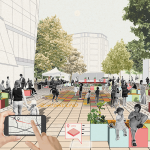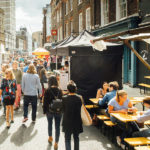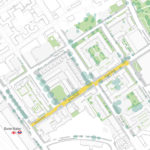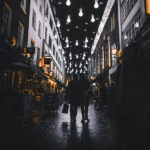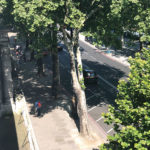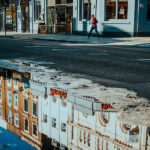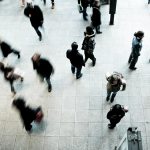This week we saw the end of arguably one of the most exciting displays of art for all, right in the heart of London, at Piccadilly Circus. With our cities and public spaces finally welcoming back a swathe of commuters, tourists, families, students and workers we couldn’t help but applaud the free exhibition of public art displayed along the lively streets of Piccadilly.
As a city known for its buzz, fast pace nature, diversity and being one of the great melting pots of culture where individuals from all walks of life can live, laugh, work and play freely, it is in moments like this where the power of art, creative expression and design truly shines in all its forms of colour and meandering patterns. For many, the power of art is very personal, for us – as place makers, modellers, engineers, designers and transport planners, we believe such a display of art is essential to enable us as dwellers and users of these ever-moving environments to pause, connect and occasionally look up.
Over the past 12 – 18 months, during a unique period where the challenges of a global pandemic has been coupled with honest and frank conversations revolving around race, diversity and inclusion – one thing this well curated exhibition does is represent the unique nuances one connects to when they experience the hidden pockets and local neighbourhoods dispersed across the city of London. From the vibrant and rhythmic tempo of London captured through the works of Vanessa Jackson to the batik inspired geometric forms which combines classic sculpture with African culture by Yinka Shonibare CBE RA – it’s nearly impossible to do anything but admire the scale and magnitude of the exhibition and imagine where else art could be used as a tool to spark conversation and trigger a moment of calm and renewed community spirit within the spaces we live, visit and work in.
So, on that note, we asked members from our team to shine a spot light on spaces they have seen be transformed through the expression and execution of art and design.
Kevin Larrivée. Assistant, Consultant at Momentum Canada, Montreal spotlights, ‘18 Nuances de Gai (18 Shades of Gay)’. This spectacular work of arts is located on Sainte-Catherine Street, principal commercial street of the Gay Village in Montreal. 180,000 balls in the colours of the LGBTQ+ community cover 1 km of the pedestrian street during the summer season between 2011 and 2019. The balls were first all pink to then become multicolour in 2017.
When asked, how does public art enhance our cities / public spaces?
Kevin shares: Public art unifies citizens and visitors by representing and highlighting the history, culture and identity of a city. Public art shapes the attractiveness and dynamism of an area.
What do you love about your chosen piece?
Kevin: This artwork was a great way to highlight the diversity and difference of this unique neighbourhood while being unifying by attracting people from all over to visit the neighbourhood and become aware of the LGBTQ+ community.
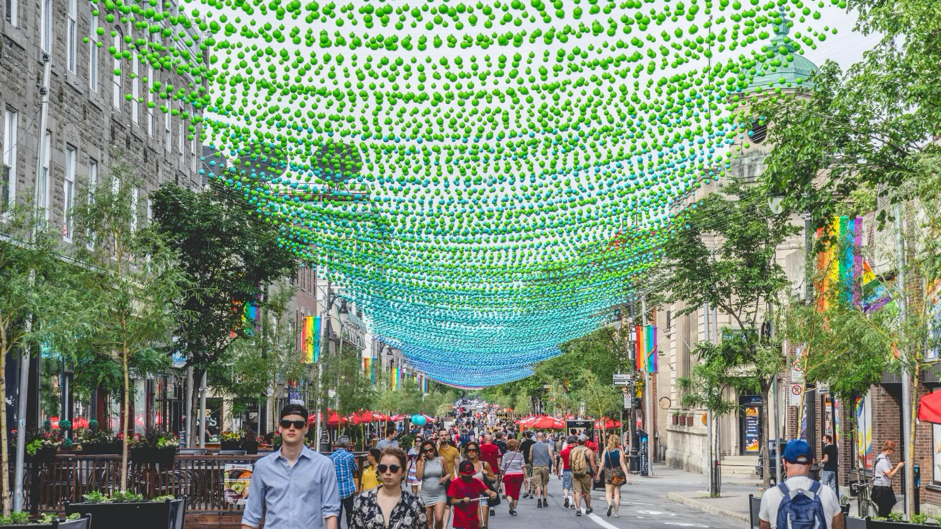
Paula Autesta, Assistant Consultant at Momentum Canada, Montreal spotlights: The street Av.Du Musée which is closed to traffic each summer to accommodate a new art installation.
The street is surrounded by sculptures from the Montreal Museum of Fine Arts and each year a unique atmosphere is created to enable visitors and residents to have a unique experience. This year, the street was transformed into a glacial river. Through an immersive installation accompanied by a poem by Joséphine Bacon alluding to the drifting glaciers, the street invites visitors to reflect on the importance of glaciers for our planet and the role they have played on the lives of indigenous people.
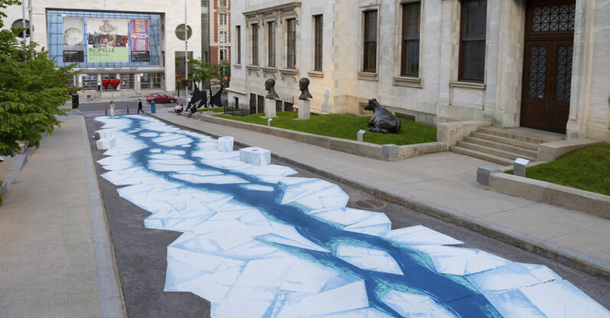
(image from Montreal Times)
And lastly, Scott Ohene-Nyako, Design Manager at Momentum UK spotlights the recent transformation of Bank Street Park in the heart of the steel grey financial district where local designer and artist Yinka Ilori brought heritage, culture and a sense of ‘play’ to the basketball court that welcomed locals and individuals from various backgrounds to Canary Wharf.
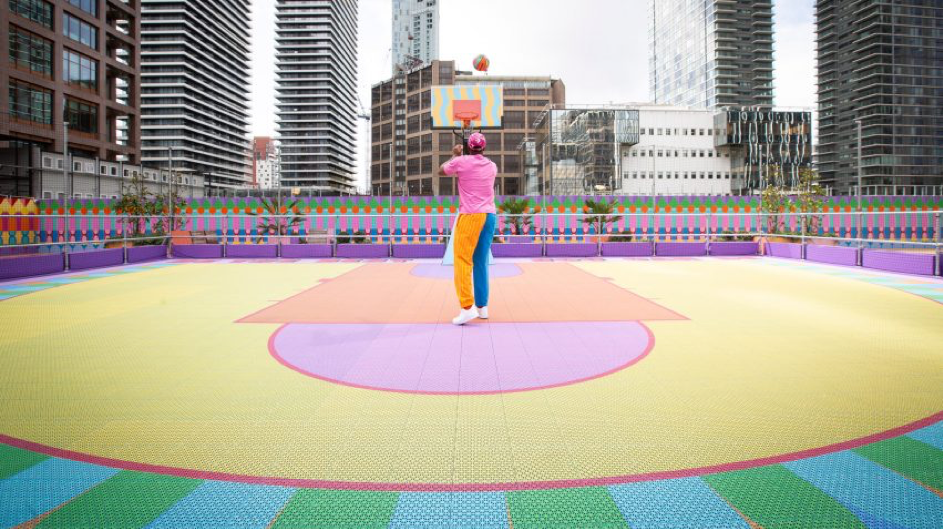
(image from dezeen)
One thing we can observe through this thread of examples is how public art has the power to revive and humanise seemingly neglected public spaces and create a sense of access, connection and identity; attributes many long for as they continue living their day to day.
